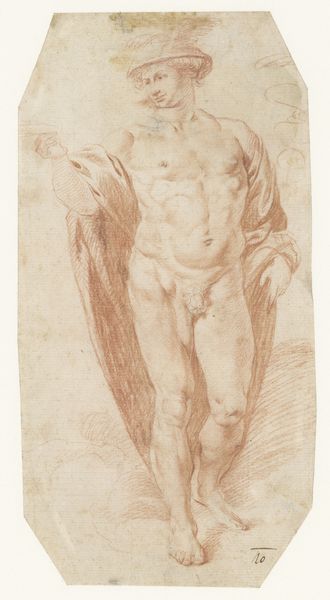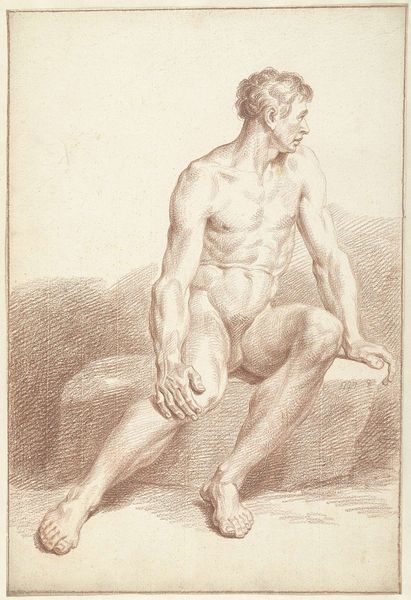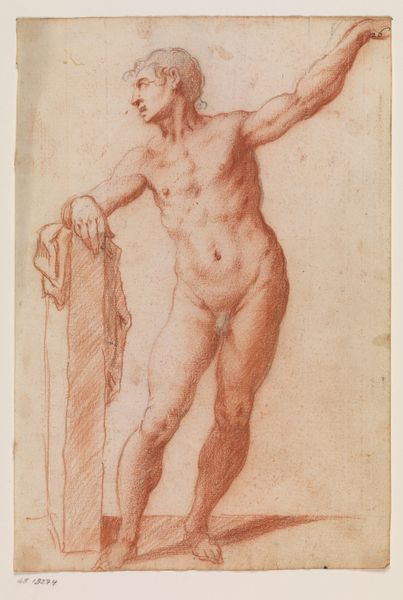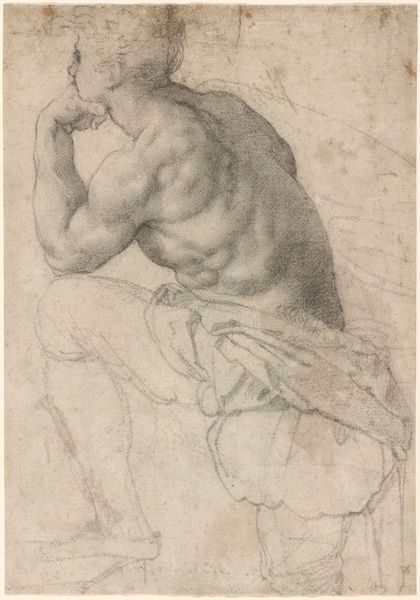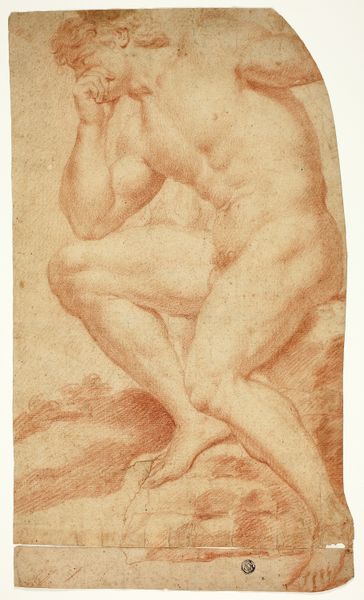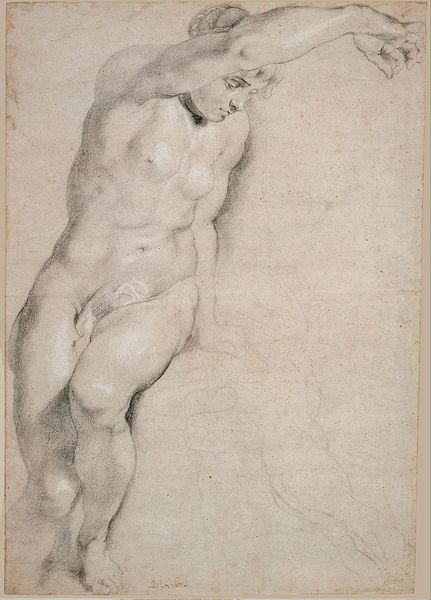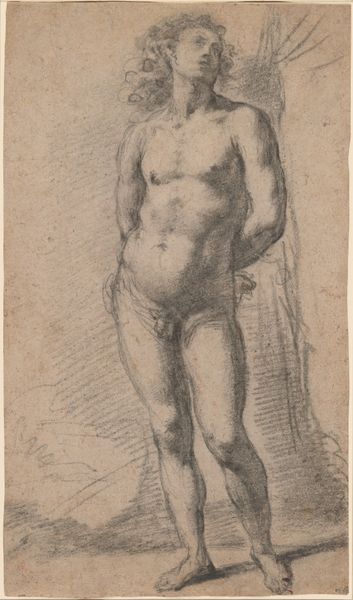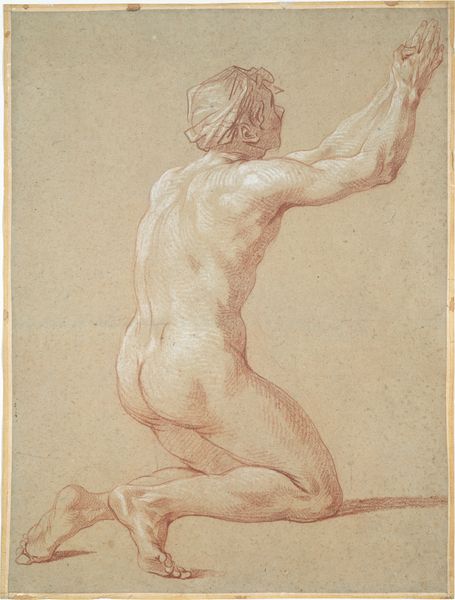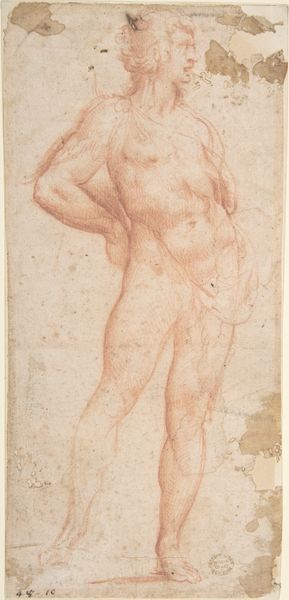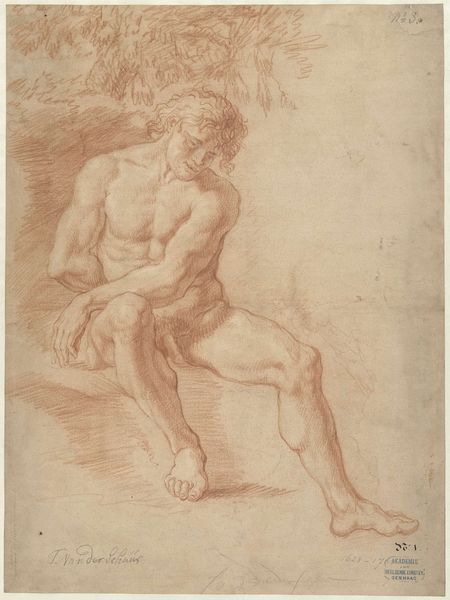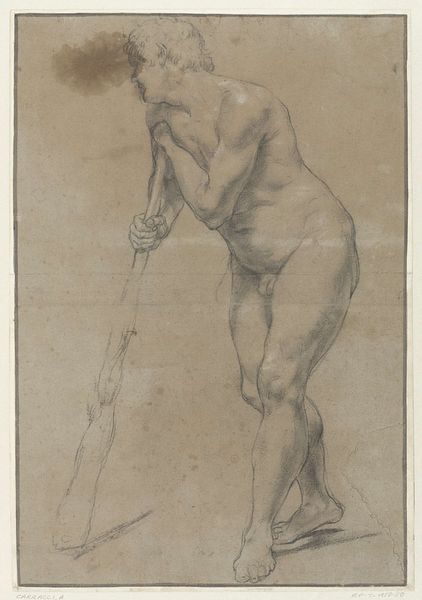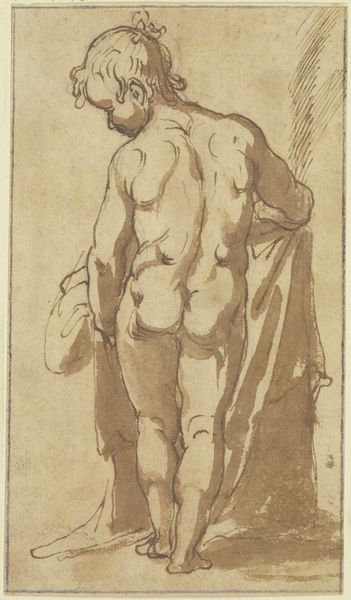
drawing, pencil, charcoal
#
portrait
#
drawing
#
classical-realism
#
charcoal drawing
#
figuration
#
pencil drawing
#
pencil
#
charcoal
#
nude
#
male-nude
Dimensions: 15-1/8 x 10-1/8 in. (38.4 x 25.7 cm)
Copyright: Public Domain
Curator: Before us is “Nude Male Figure, Rear View,” a drawing crafted between 1700 and 1800, currently residing at The Metropolitan Museum of Art. It’s attributed to Giovanni da San Giovanni. Editor: My initial response is captivated by the tonal gradations; the modeling of form, built up from subtle hatching, makes the figure emerge gently from its surrounding space. Curator: Indeed, Giovanni's delicate use of charcoal and pencil constructs a body that embodies both vulnerability and strength. Consider how the curve of the spine, emphasized by light and shadow, suggests a burdened posture, reflective perhaps of societal expectations placed upon masculinity during that era. We must also acknowledge how the male nude, within Western art, often serves as a site of power, objectification, and the construction of gendered ideals. Editor: Precisely, the careful application of cross-hatching to define musculature allows light to sculpt the form; it directs the viewer's gaze along lines of tension. Note how this technique transforms mere anatomy into an aesthetically-charged composition of line and shadow. It evokes contrapposto of classical sculptures and infuses this drawing with life, rhythm, and harmony, where no line or shading seems superfluous. Curator: Furthermore, how do we situate such depictions in relation to the queer gaze, or the politics of representation during times when such bodies were either policed or aestheticized according to rigid societal norms? How does seeing this nude today affect the queer body or other marginalized groups? Editor: Intriguing. Though your question pulls us towards identity politics, one can’t overlook that regardless of the social considerations, the anatomical rendering exhibits masterful draughtsmanship, showcasing his expertise. The figure, detached from a readily identifiable narrative context, stands as an exploration into ideal, human form through balanced composition and nuanced tonality. Curator: Perhaps in reflecting on that idealized form we must contend with those whom that "ideal" excludes; yet I appreciate that you see the careful consideration within composition that shapes the emotional resonance of the image, leading us to contemplate our values today. Editor: Ultimately, this exploration into line and shadow highlights a captivating blend of precision, creativity, and art’s ability to stimulate thoughtful responses and conversations across disciplines.
Comments
No comments
Be the first to comment and join the conversation on the ultimate creative platform.

